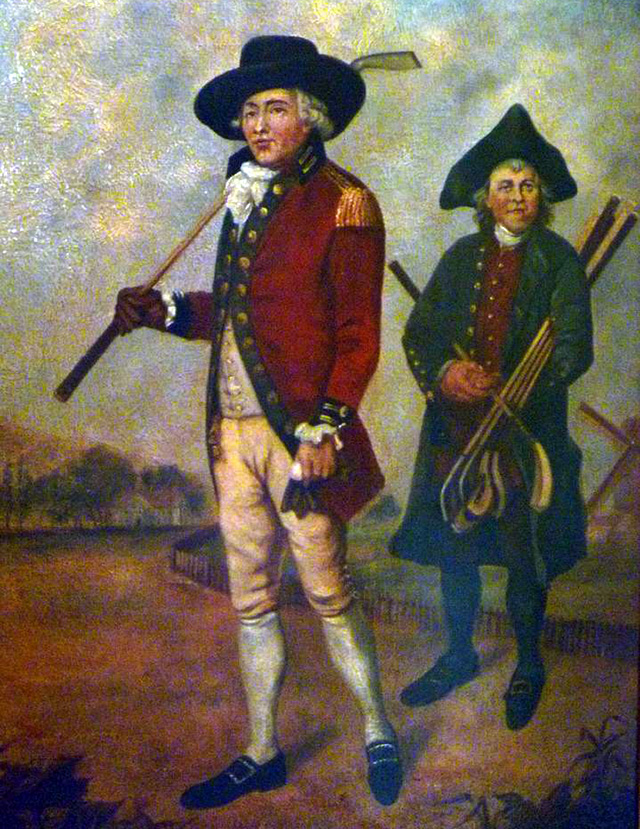In the pastime played by the Scottish that later became the game of golf, small pebbles were hit around the sand dunes using wooden sticks. Golf clubs of today have come a long way from the simple sticks used initially.
 golf player and caddy, painting from 1790
golf player and caddy, painting from 1790 Early Clubs
For hundreds of years, golf clubs were made out of wood, and it was not until late last century that the wooden shaft was replaced by other materials. Players initially carved their own clubs and balls from wood, though they soon turned to skilled craftsmen to produce competitive equipment.
Club names
Using numbers to signify the different clubs is a relatively new thing. For a long time different clubs were known by a variety of names, such as:
- Longnoses - for driving
- Bulgers - like today's woods as they have a bulbous head.
- Fairway clubs (or grassed drivers) - for medium range shots
- Spoons - for short range shots
- Niblicks - like a wedge
- Cleek - for putting
Woods
The shafts of the early clubs were made out of local European woods like ash or hazel. Club heads were made from tough wood such as beech, holly, pear and apple. The heads of the wooden clubs were long and thin, resulting in them being known as "long-nose woods". Wooden headed clubs were usually hand made by the local golf professionals until the early 1900s, when the growth in popularity of the game made factory produced clubs profitable.
Irons
Even as metal clubs became available, they were used sparingly as they could easily damage the early 'feathery' golf balls (see golf ball history). As early as 1750 some club-makers used forged metal heads for niblicks (wedges). A metal headed club may have just been saved for getting the ball out of the rough or from cart tracks. The early iron clubs, made by blacksmiths until about the 1870s, were quite crudely made, making them heavy to wield and difficult to control. The advent of drop forging technique in the late 1800s resulted in lighter and better made clubs that could be mass produced in factories.
The early 1900 was a period of experimental golf club designs, with many not proving the test of time. One of the most important changes was the move in around 1908 from smooth faces on the irons to the grooves that are used today. The grooves enabled more backspin on a ball, resulting in more distance.
Shafts
The shafts of the early clubs were made out of local European woods like Ash. The introduction of golf into America in the early 1800s lead to hickory wood being used in the shafts, which was found to be far more durable than other woods. Hickory became the standard material for golf club shafts until steel shafts were introduced in about 1925 in the US, and became standard everywhere from the mid 1930s. They had the advantage as they did not break like the hickory shafts and could be produced reliably with uniform feel in matched sets. The graphite shaft, which is lighter and stronger than steel, was introduced in 1973.
Today
Today's sets of woods and irons are developed using computer technology to provide durability, weight distribution, hitting distance and accuracy. They are also made using advanced materials such as titanium, graphite and zirconia.
Related Pages
- Golf Club Design — understanding the specifications of golf club design.
- Golf Clubs for sale in the online store.
- All About Golf Clubs
- History of golf
- History of the golf ball
- About Sport in Scotland


 Current Events
Current Events